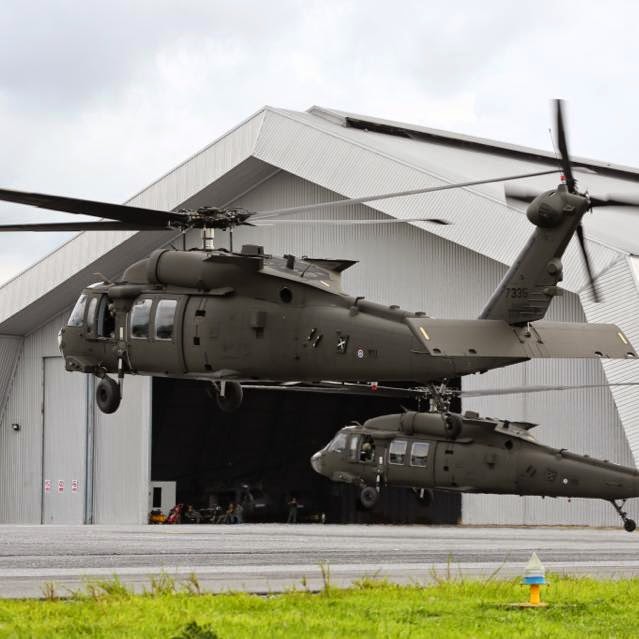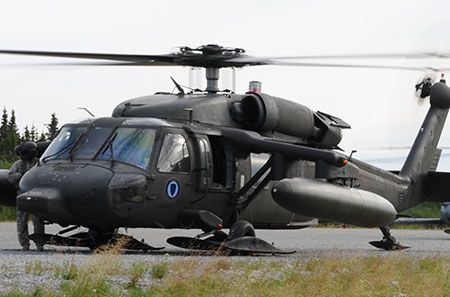Security First: Essential Action In UH 60 Helicopter Upkeep
Comprehending the Mechanics and Engineering Behind Uh 60 Helicopters
The UH-60 helicopter, generally known as the Black Hawk, stands as a pinnacle of modern-day rotorcraft modern technology, embodying a blend of robust engineering and detailed auto mechanics. As we peel back the layers of the UH-60's design, a world of elaborate systems and careful engineering comes to light.
Background of UH-60 Helicopters
The background of UH-60 helicopters traces back to the late 1970s when the USA Army looked for a flexible and advanced energy helicopter to change its aging fleet. In reaction to this requirement, the Sikorsky Aircraft Firm developed the UH-60 Black Hawk helicopter. Presented in 1979, the UH-60 swiftly ended up being a staple in army procedures due to its excellent abilities.
The UH-60 was designed to excel in a range of goals, consisting of army transport, clinical discharge, electronic war, and special operations. Its capability to adapt to different duties made it a beneficial property to the united state Army and various other army forces worldwide
For many years, the UH-60 system has undertaken several upgrades and variations to enhance its performance and equal advancing goal demands. These helicopters have seen considerable solution in problems such as the Gulf Battle, Afghanistan, and Iraq, showcasing their dependability and convenience in varied operational atmospheres. The UH-60's abundant history is a testimony to its long-lasting heritage as a top utility helicopter.

Engine and Power Systems
Using innovative propulsion modern technology, UH-60 helicopters are furnished with innovative engine and power systems to guarantee ideal performance and reliability in a variety of operational situations. The UH-60, typically recognized as the Black Hawk, is powered by two General Electric T700-GE-701D engines, each qualified of supplying up to 1,940 shaft horse power. These turboshaft engines provide the essential drive for the helicopter to perform its missions successfully, consisting of army transportation, clinical discharge, and combat assistance.

Rotor System and The Rules Of Aerodynamics
Just how do the blades system and the rules of aerodynamics of UH-60 helicopters add to their functional performance and trip capabilities? The rotor system of the UH-60 helicopter plays a critical duty in giving lift and propulsion. The UH-60 includes a four-bladed, totally expressed rotor system that enables high ability to move and security during flight. This style enables the helicopter to perform a vast range of goals, from transportation and clinical discharge to deal with procedures.
The rules of aerodynamics additionally play a crucial role in the performance of UH-60 helicopters. The streamlined fuselage and blades blade style lower drag, permitting the helicopter to attain higher speeds and far better gas effectiveness. The wind resistant style of the UH-60 additionally contributes to its ability to operate in varied ecological conditions, consisting of warm temperatures and high altitudes.
Avionics and Trip Control Systems

In its intricate control with the rotor system and aerodynamics of UH-60 helicopters, the avionics and trip control systems form an important network of modern technologies shaping the airplane's functional capabilities. In the UH-60, these systems consist of digital displays, interaction radios, General practitioner navigating, weather condition radar, and auto-pilot systems.
The useful reference trip control systems of the UH-60 are liable for translating the pilot's inputs right into the appropriate modifications to the blades system, this contact form guaranteeing steady flight and maneuverability. These systems contain hydraulic actuators, servos, and computer systems that function together to manage the tail and primary blades, along with other flight control surface areas. By precisely managing the helicopter's trip dynamics, these systems enable pilots to carry out a variety of missions, from transport and search-and-rescue to deal with procedures, with accuracy and self-confidence.
Role and Applications in Aeronautics
The function and applications of avionics and flight control systems in aviation are important to ensuring the secure and reliable operation of aircraft, consisting of UH-60 helicopters. Avionics systems in UH-60 helicopters include a range of electronic systems that aid in navigating, communication, tracking, and controlling numerous airplane functions. These systems include electronic display screens, auto-pilot systems, interaction radios, general practitioner navigation tools, and climate radar. Flight control systems play an important duty in maneuvering the helicopter in the air, preserving security, and guaranteeing accurate motions. The fly-by-wire modern technology used in modern-day UH-60 helicopters equates pilot inputs into digital signals, which are after that translated by the flight control computers to readjust the aircraft's control surface areas. In addition, these systems incorporate security attributes such as autopilot modes, terrain recognition warning systems, and security augmentation systems to enhance the overall safety and operational abilities of the UH-60 helicopters in different objectives, consisting of army transport, medical emptying, search and rescue, and airborne firefighting.
Conclusion
In conclusion, the UH-60 helicopter is a versatile airplane with an abundant history and advanced design. Its engine and power systems, blades system, click now the rules of aerodynamics, avionics, and flight control systems all interact to make it a reliable and effective maker. The UH-60's duty and applications in air travel are large, varying from military operations to look and save objectives. Its proceeded growth and use show its importance in the area of air travel (uh 60).
In its intricate sychronisation with the blades system and aerodynamics of UH-60 helicopters, the avionics and flight control systems develop a crucial network of innovations shaping the airplane's operational abilities.The flight control systems of the UH-60 are responsible for equating the pilot's inputs right into the suitable adjustments to the rotor system, guaranteeing steady trip and maneuverability. Avionics systems in UH-60 helicopters encompass an array of electronic systems that aid in navigation, interaction, monitoring, and managing different aircraft features. Furthermore, these systems incorporate security features such as auto-pilot settings, terrain recognition warning systems, and stability augmentation systems to enhance the overall safety and functional capabilities of the UH-60 helicopters in numerous goals, including army transportation, medical evacuation, search and rescue, and airborne firefighting.
Its engine and power systems, blades system, the rules of aerodynamics, avionics, and flight control systems all work with each other to make it a effective and trusted machine.